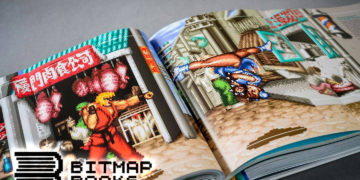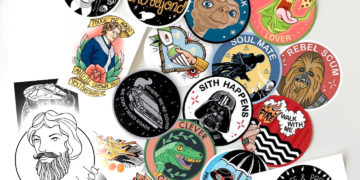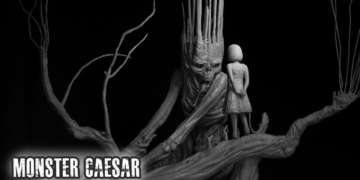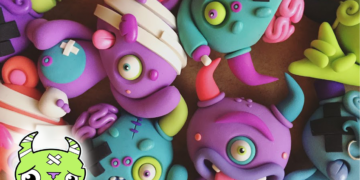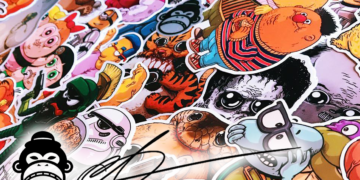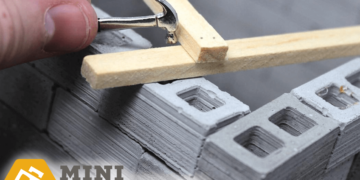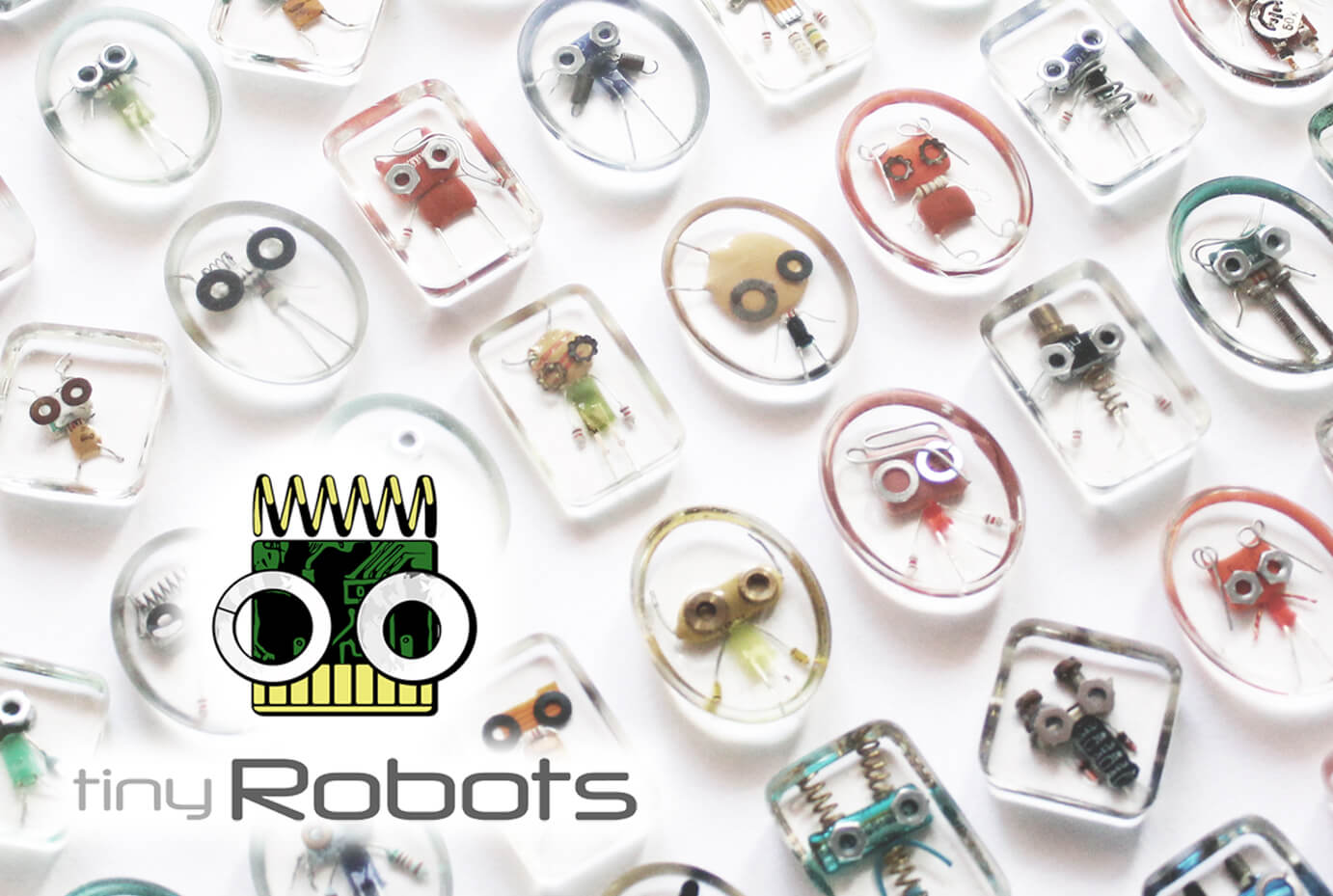
Hey Guys this is the second interview as part of our Makers series. In our Makers section we are introducing you to the awesome people behind innovative products. Our guest this week is Andreea Strete the creator of Tiny Robots.
Please tell us a little about your background and what you are doing.
My name is Andreea Strete and I am currently studying architecture and urban planning in Cluj-Napoca, Romania, and in my free time, I enjoy focusing on other art projects as well. Since I was little, I had an interest in various types of arts (drawing, crafting, photography, and nowadays architecture, design, 3d modeling and jewelry making). When I was in high school, I first started jewelry making by cutting photographic film and turning them into earrings. After this, I was uploading my artwork to deviantART, where people suggested I should open a handmade store on Etsy. This was definitely the start of my jewelry making journey.
TinyRobots are one-of-a-kind creatures made out of electronics and recycled materials: discarded electronics, computer parts, monitors, MP3s, keyboards, mouses and many others. Tiny Robots represent small “modern bugs” encapsulated in resin as jewelry, easily to carry around with you or as stationary resin blocks for home decoration. (psst, they even come with a certificate of adoption!)
I try to keep electronic waste out of the environment by making these up-cycled characters, assembling the components and transforming them into something more than just scrap. Giving them another purpose. Device upgrades are becoming more and more frequent for many of us. Unfortunately, too many people give virtually no thought to what becomes of all those discarded gadgets, and neither are most device manufacturers.
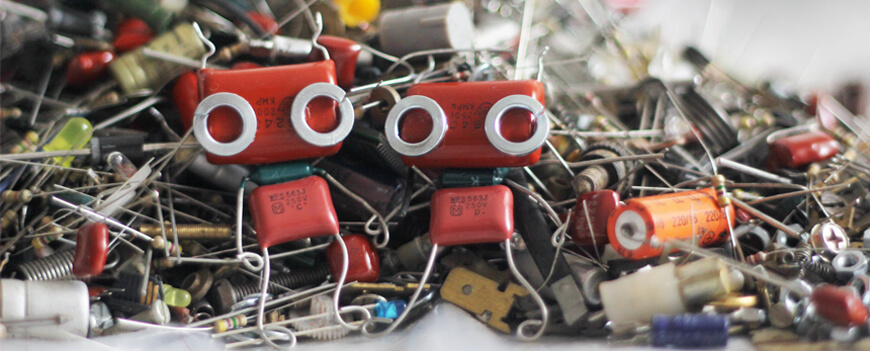
What inspired you to create Tiny Robots?
As soon as I discovered resin crafting, I knew it was something I wanted to experiment with. Not only is it an expensive hobby, but it also requires a lot of patience, determination and research. After studying online documentations and looking at every resin related article I found interesting, I wanted to give it a go.
“Why buy it with 20$ when you can make it yourself with +357$?”
I knew I wanted to start with something small (pendants, rings), therefore I knew I needed tiny pieces suitable for resin encasing. Most suitable, but commonly used are dried flowers and metal flakes. But I wanted to craft something else, something unique and original.
I thought of encasing electronic components one day, when my brother decided to get rid a broken monitor that we kept in the mouse for the last couple of years. I knew, I could make something out of it, so I decided to discard it and take all the tiny pieces I could find. After rearranging them into different positions, I noticed I could make them look… alive. By giving them eyes. Hands. Legs. Hairstyles. But most importantly, names. That’s why I decided to hand out certificates of adoption for each and every Tiny Robot.
“Robots are people too!”

What goes into developing a new piece?
Each TinyRobot comes alive from a stack of a large variety of electronic components and other parts. At first, I got the components from discarded electronics I had at home, went to stores to ask for broken and unnecessary pieces, but I got most of the pieces from a lovely friend from the Czech Republic, who also helped me in creating the official website.
The second step of the process is the resin pouring. The resin is being prepared and then poured in silicon molds along the robots, which then hardens. The resin I use is a high quality resin that resists yellowing over time and exposure to sun. Once I remove the pieces from the molds, I hand sand each piece through multiple grades of sandpaper and polish to create a smooth, soft and shiny finish. Afterwards, each piece is taken through another process of hardening. Next steps are finishing the product with jewelry accessories, taking photos, packaging and sharing them with the world online.
The whole process can take up to a month and takes a lot of patience.
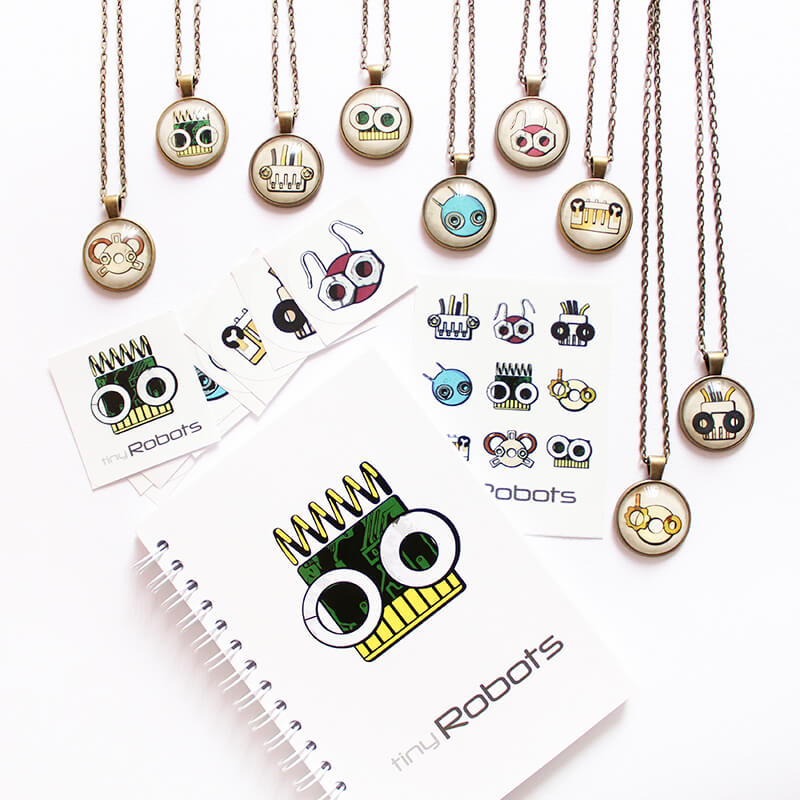
What have been some of the biggest challenges?
One of the biggest challenges started when Tiny Robots went viral. I did not expect such a great feedback from people. In the beginning, I only had 40 tiny robots pendants in my shop, leaving me out of stock fast. Slowly but surely, I started adding more and more pieces to my inventory, at the same time I was also working on making an official website, a new home just for them. All this required an amount of time that I wish I’d spent before sharing Tiny Robots with the world.
What has been your greatest achievement so far?
My best achievements are posts that went viral on 9gag and BoredPanda, this was the beginning that had a huge impact on the project. Other features on various other websites kept the project going.
It’s a great feeling to know people love what I do and to see people wearing stuff I designed. I enjoy making one-of-a-kind things for people to wear. I believe others want to have something they know is made by hand, something unique, original and timeless rather than something mass produced.
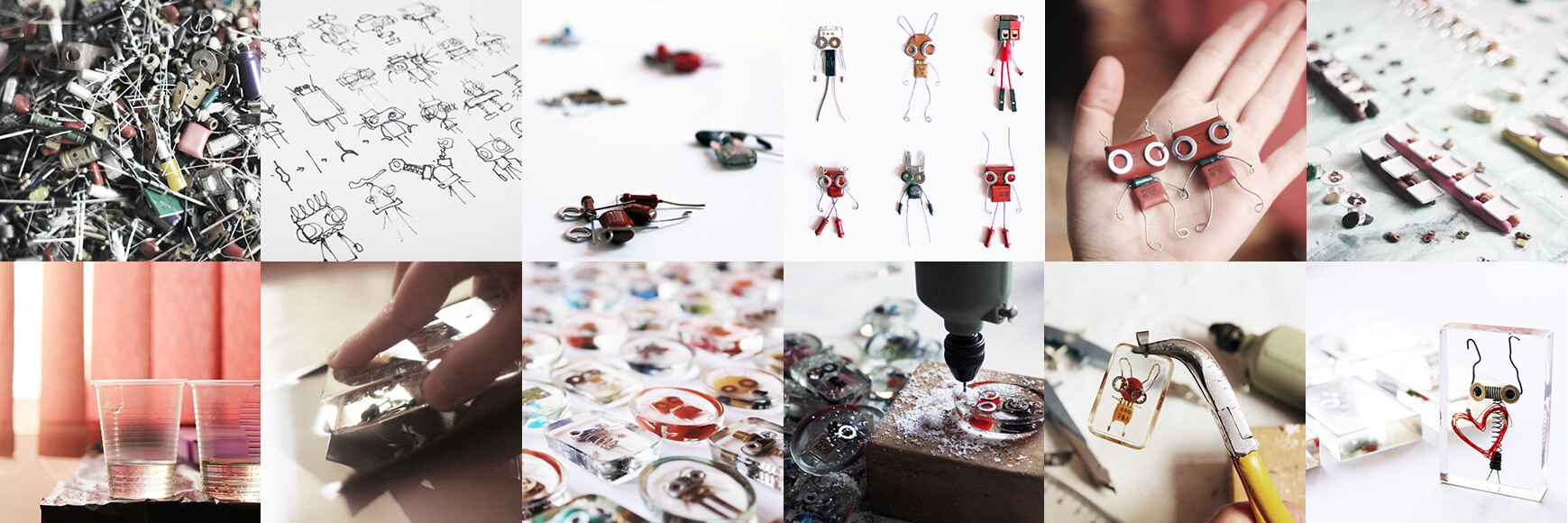
What are your goals for the future?
Right now I am working on making new products for my Etsy shop, and soon I will start making new tiny robots aswell! In the past, I started with pendants, and also added earrings, rings, bracelets, cufflinks and also bigger products, home decoration blocks. (I love to call them Biggie Robots). Robo-label pins and more interesting biggie robots are on my “to-do-list”!
I don’t even know what will come next. I am continuously working on a lot of different pieces, trying my best to introduce something new and fresh. I always loved to experiment and combined my ideas with my skills to bring together a more cohesive collection.
“Make big plans and aim high!”
What advice do you have for someone who is just getting started with their own project?
Think outside the box, be adventurous when creating something new. If at first you don’t succeed, try and try again. No one said it would be easy. If you are at the beginning of your project, definitely check out the internet for inspiration or things to avoid. Pinterest, Youtube, deviantART, blogs, forums, groups. There are a huge amount of ideas and helpful resources that can start you off. It’s easier now than ever to teach yourself something new.
Be confident in what you are creating. In my opinion, this is the most important thing. 🙂
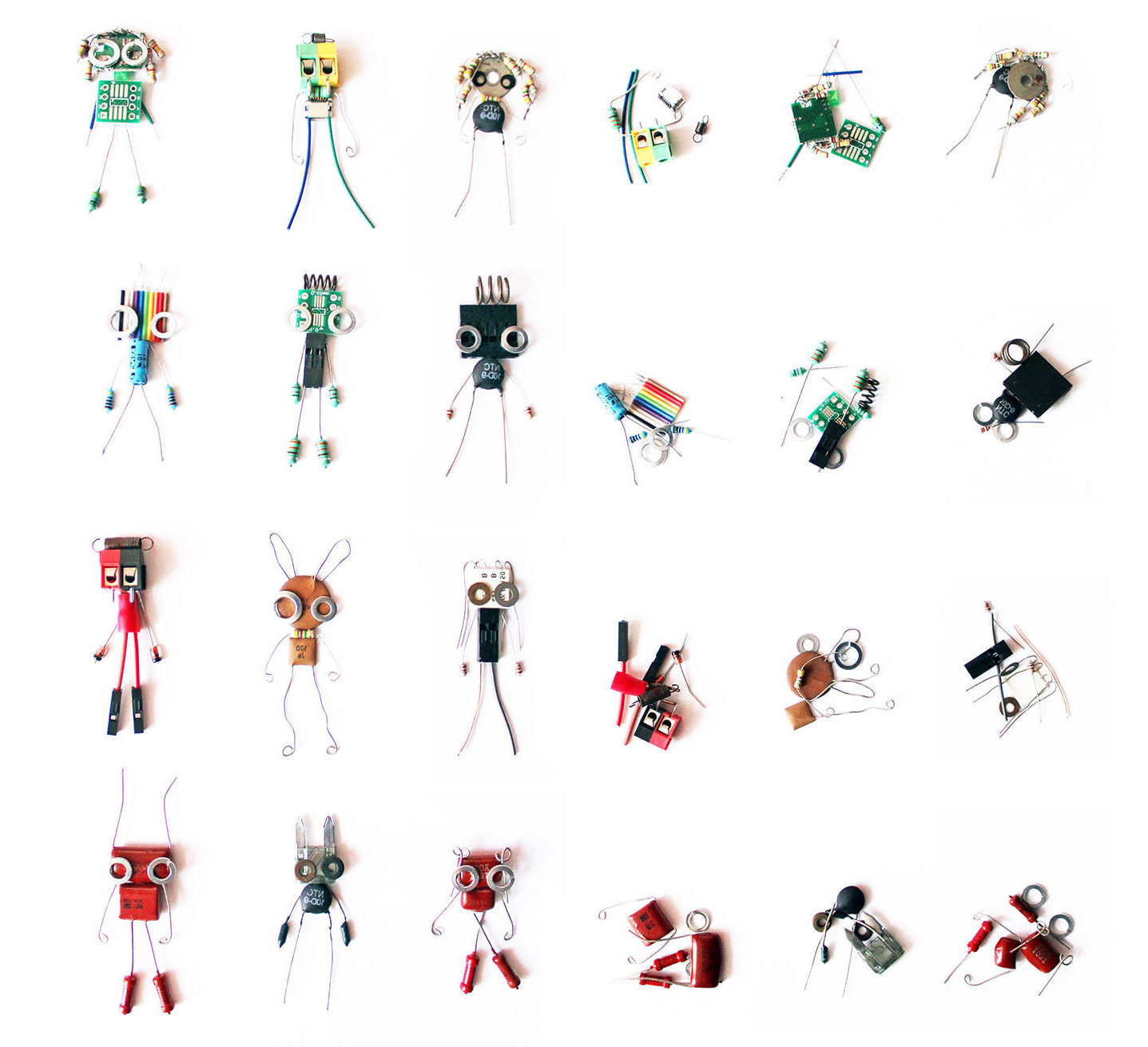
Which resources, tools, insights have been the most helpful to you?
As I mentioned earlier, the internet is a huge place for inspiration. I am self-taught in resin and jewelry making. I did a lot of research about resin crafting. (best products available, what to do and what to avoid, most common mistakes done, safety measures, tips and tricks, etc).
Nowadays, you can find pretty much anything you want online. All you need is time, patience and determination to do and learn what you want.
Which device has the best parts for tiny robots?
Any small electronic component is welcome in the making process! I always move them around and make multiple combinations until I get the final best looking tiny robot. Even if they have the same characteristic, I am trying my best to make each one of them unique.
I can say that the best device so far was the first monitor I discarded, without that this project wouldn’t exist.

Who is your favorite movie/TV robot and why?
My favorite robot-related movie, I can say it’s Wall-E. Insanely unique, incredibly animated, well written and full of heart. WALL-E’s puppy eyes and cute figure inspired me to create robots that also have an adorable and friendly face.
Where can we learn more about you and Tiny Robots?
You can stay tuned about me and my work on:
My facebook pages, www.facebook.com/tinyrobotseu/ & https://www.facebook.com/11pixeli/
And Instagram @tinyrobotseu
Thank you for taking the time to read a little about my crafty world!

